Pop-up markets are a dime a dozen today. But one of the earliest pop-up markets in Singapore happened during your parents’ time in the 60s to 70s and it was a hawker centre called Glutton’s Square, or Orchard Road Car Park Market.
Today, the area is occupied by Orchard Central.
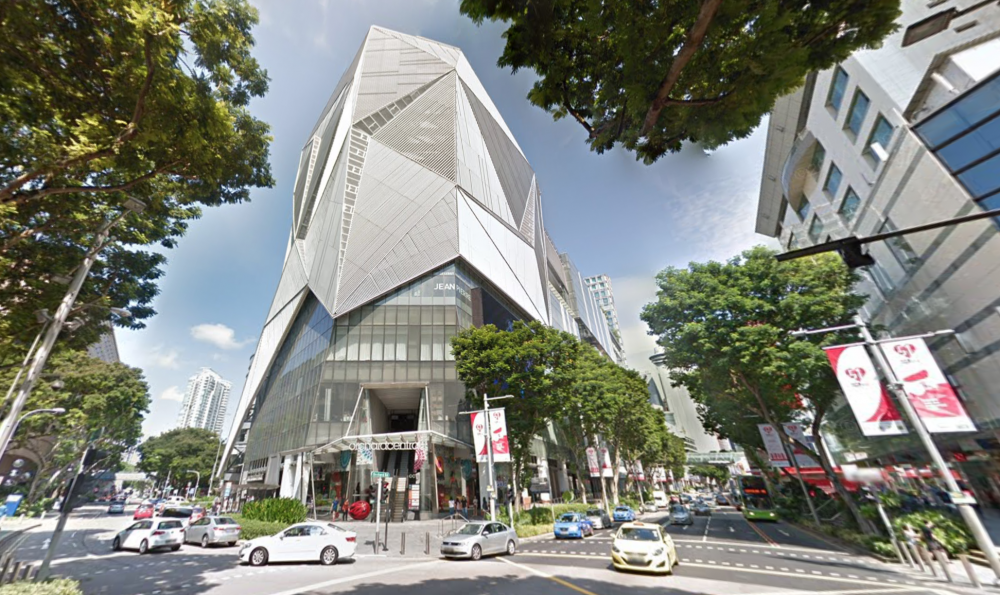 Present-day Orchard Central used to be the site of Orchard Road Carpark Market. Via Google Maps.
Present-day Orchard Central used to be the site of Orchard Road Carpark Market. Via Google Maps.
Night-time food haven
Orchard Road Car Park was just that - a car park - by day.
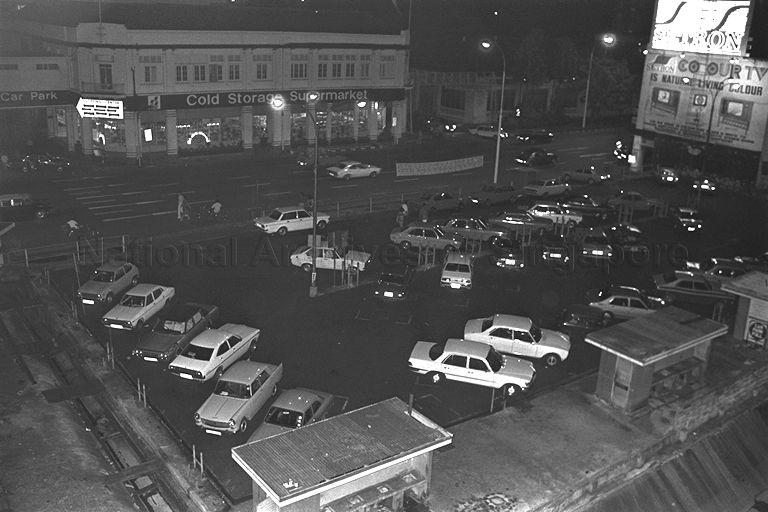 The famous Orchard Road Carpark. Via National Archives of Singapore.
The famous Orchard Road Carpark. Via National Archives of Singapore.
But come nightfall, the place transformed into a bustling food haven, dubbed by some as “Jaws Centre” for pretty much the same reason we call Newton Circus a “tourist trap” today.
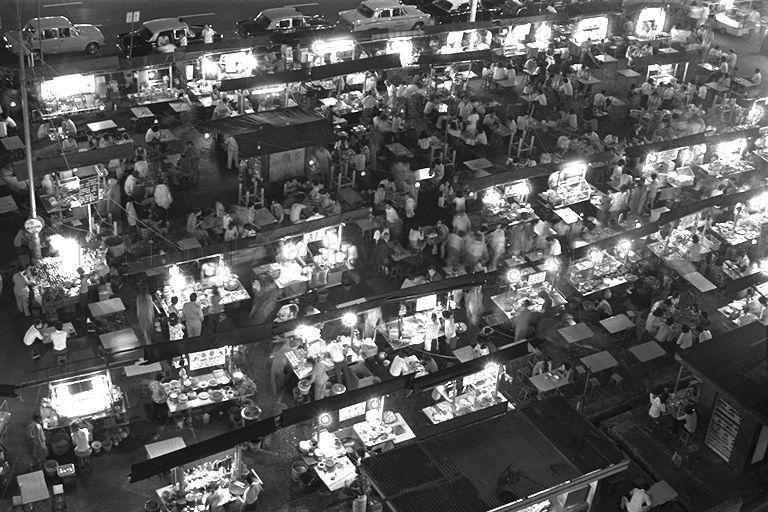 The carpark transformed into Glutton's Square, a pop-up hawker centre at night. Via National Archives of Singapore.
The carpark transformed into Glutton's Square, a pop-up hawker centre at night. Via National Archives of Singapore.
Started in 1966, the informal, open-air hawker centre followed a clockwork schedule. These hawker would set up their stalls and tables and chairs, often squeezing two stalls, each with two to three tables.
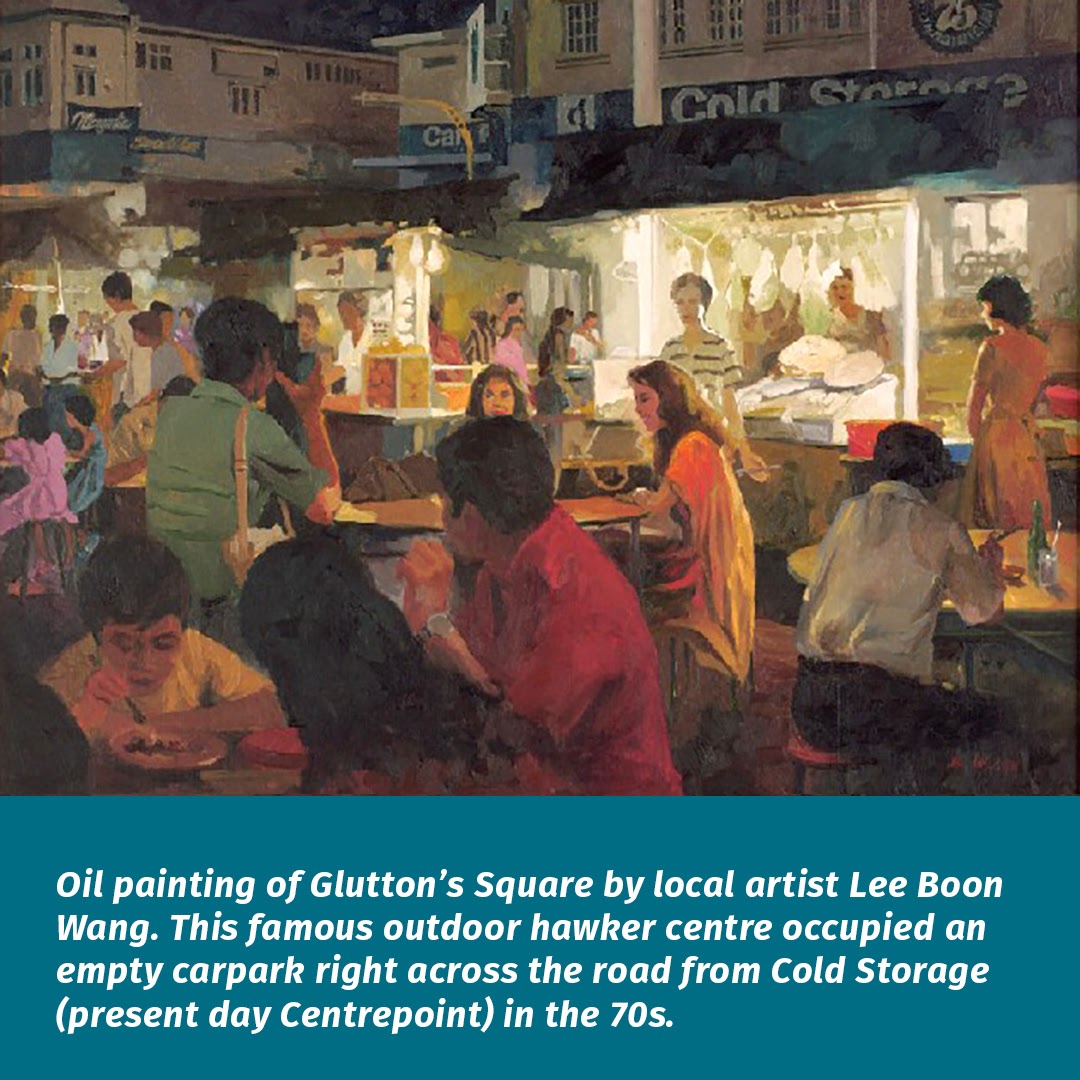
“Hawkers would rush into the open air carpark at 5.30pm sharp before the sun set,” said Madam Leong Mun Yee, 70, a ex-patron of Glutton’s Square who was particularly fond of the rojak.
By the 1970s, the Orchard Road Car Park Market was a very popular hawker spot. At its most popular, the market had 80 stalls cramped within the car park.
“The tables and well surroundings were quite dirty, ” added Mr Lawrence Wee, 66, another customer who fondly remembered Orchard Road Car Park Market.
“But at least there were tables and chairs. If you need more space for a bigger group, they would open a new table.”
In part, the appeal of the Orchard Road Car Park Market was its “raw”, unsanitised nature. Being a part-time-car-park-part-time-hawker-centre, there was no sanitation facilities for the hawkers.
“There were no toilets or water supply for the stores,” said Madam Jennifer Lam, 66. “Despite all that, it was usually extremely crowded unless it was raining.”
Without piped water, the nearby canal was filled with leftover food thrown in by the hawkers. Hawkers had to fill pails of water at Koek Street and manually lug them to their stalls.
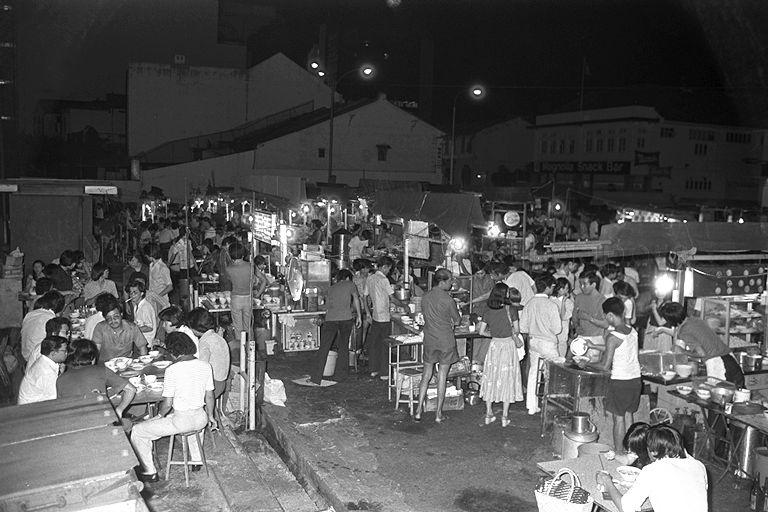 Glutton's Square. Via National Archive of Singapore.
Glutton's Square. Via National Archive of Singapore.
Customers were subjected to a cramped, humid eating conditions, but apparently were willing to brave them for the food.
Wee and Lam remember visiting the car park market on dates and drinking a lot of “greenspot and bottled soft drinks” there. Lam also remembers the char kway teow fondly, though she says the food choices at the market was mostly the same as what we would get today.
Food was “very cheap”
“Food in the 1960s was very cheap,” said Mr Lim Chong Hsien, a hawker at Glutton’s Square between 1967 and 1976. Lim sold rojak and cuttlefish at 30 cents and 50 cents.
Local favourites such as oyster omelette, Hokkien prawn mee, carrot cake and char kway teow were similarly priced below a dollar.
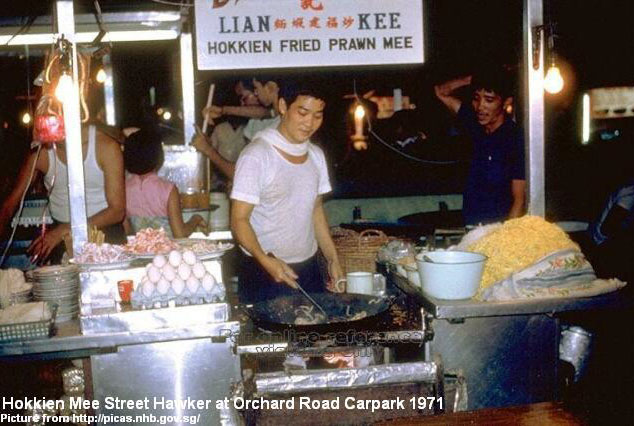
According to Lim, being a hawker wasn’t easy.
“People think that being a hawker is very easy, but the working hours were very, very long,” he said in an Mandarin oral history interview with the National Archives.
Leong previously manned a stall along Koek Street, a stone’s throw away from Orchard Road Car Park Market.
“You need to spend at least 10 hours every day at your stall selling your cooked food. Then you also have to take into account the time spent buying raw ingredients at the market. There’s no time to do anything else unless you take the day off.”
Off days for hawkers then were few and in between, according to Lim who said that hawkers cannot rest for too long, if they treasure their customers.
“You cannot rest for too long. One day off is fine, but if you take two, three days off, and if your customers come and do not find you, you’ll lose them.”
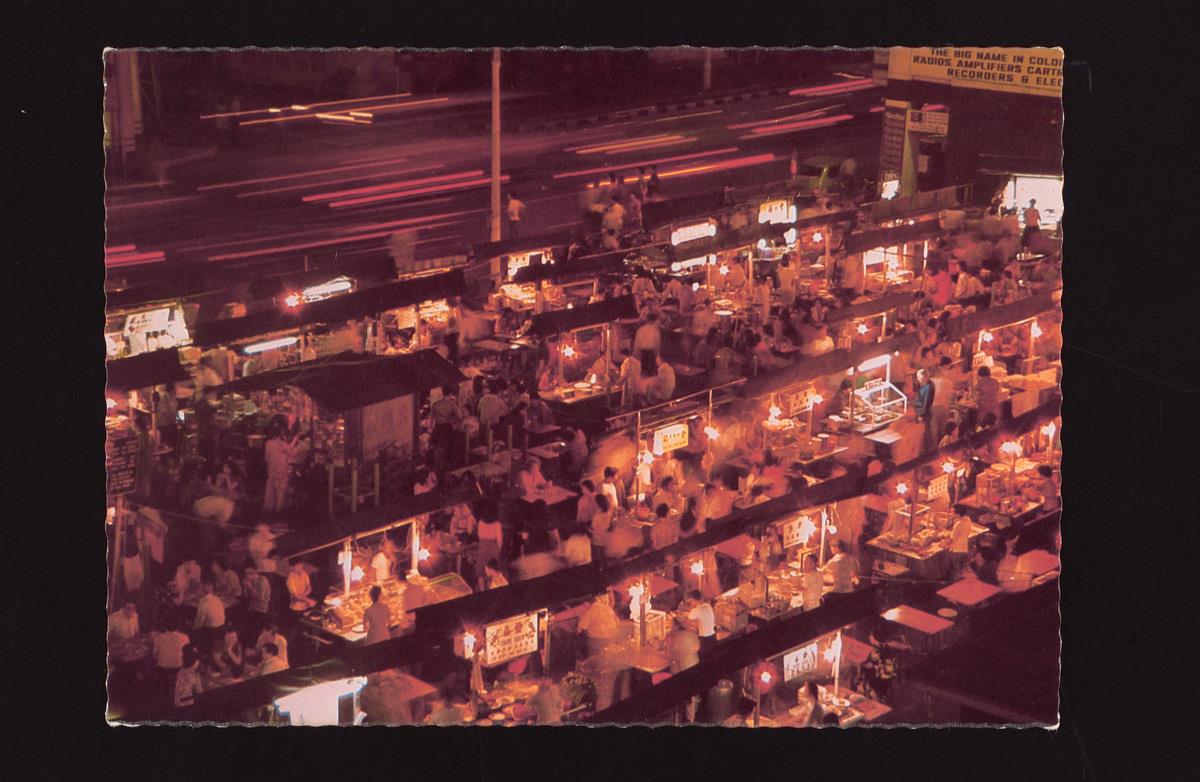 Glutton's Square in Orchard, c. 1970s Collection of National Museum of Singapore.
Glutton's Square in Orchard, c. 1970s Collection of National Museum of Singapore.
Leong agreed saying that the market’s hawkers worked till late every day, saying “My friends and I would visit at 10pm and there would still be stalls open for supper”.
Closed down and transformed into a park
In 1978, Glutton’s Square was closed down to be transformed into a park, in line with the government’s plan to transform Orchard Road into a tourist belt.
Many of these hawkers were moved to Newton Circus Hawker Centre and Cuppage Food Centre.
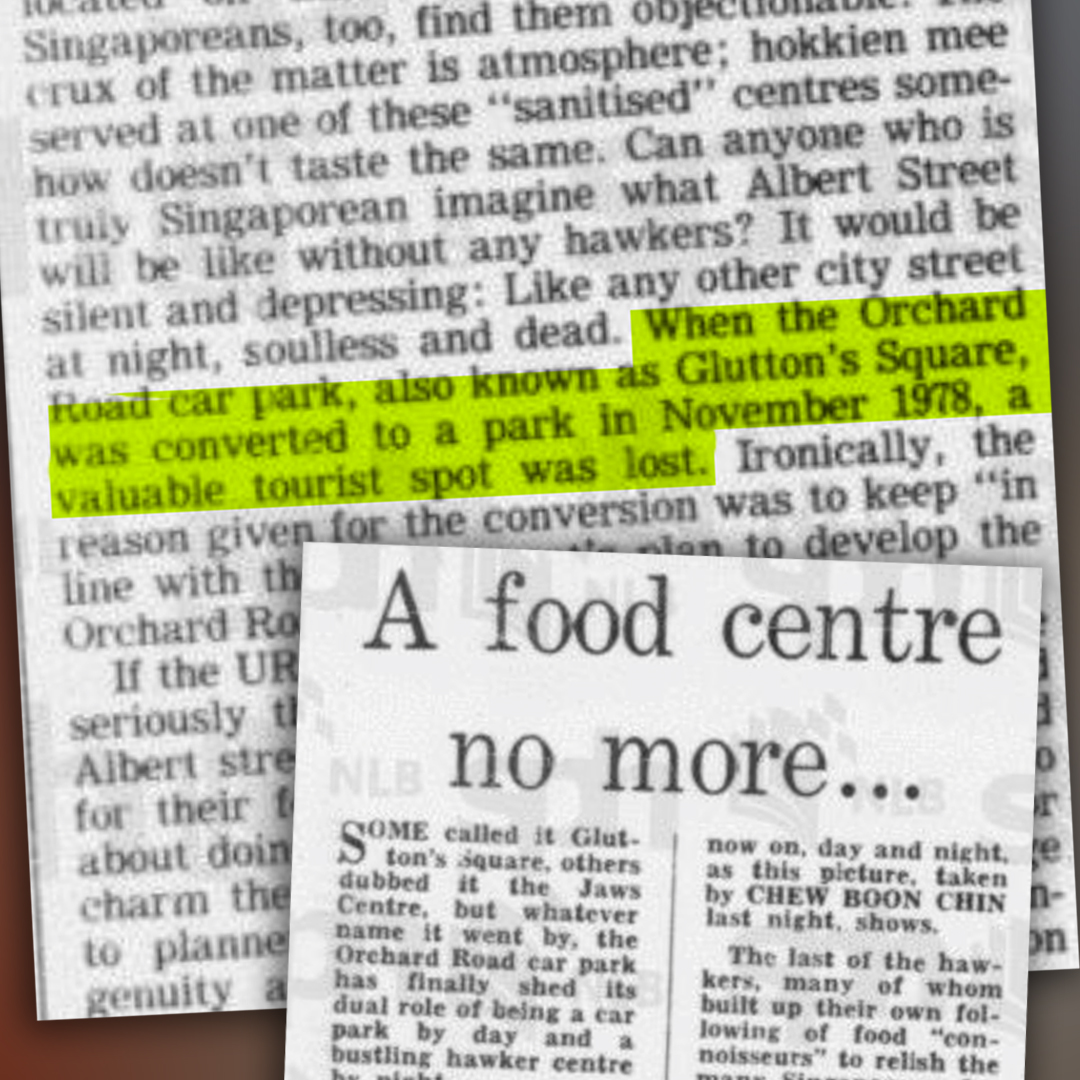 Via NewspaperSG.
Via NewspaperSG.
Today, street food no longer exists on the streets but hawker culture lives on in our hawker centres, kopitiam, and perhaps in the near future, on the world stage as an intangible piece of our Singapore heritage.
Whatever form our hawker heritage takes, Orchard Road Car Park Market will live in our collective memory for a long time as the original pop-up street food market.
The Orchard Heritage Trail
Glutton's Square and other historical spots along Orchard Road are featured in the Orchard Heritage Trail. Check out this video below to find out more about it:
&feature=youtu.be
This sponsored post by the National Heritage Board helps bring our writers one step closer to opening their own pop up hawker centre.
If you like what you read, follow us on Facebook, Instagram, Twitter and Telegram to get the latest updates.
